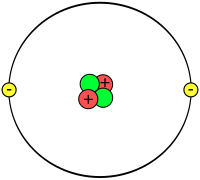Thepicometre(internationalspellingas used by theInternational Bureau of Weights and Measures;SIsymbol:pm) orpicometer(American spelling) is aunit of lengthin theInternational System of Units(SI), equal to1×10−12m,or one trillionth(1/1000000000000)of ametre,which is theSI base unitof length.
| Picometre | |
|---|---|
 | |
| General information | |
| Unit system | SI |
| Unit of | length |
| Symbol | pm |
| Conversions | |
| 1 pmin... | ... is equal to... |
| SI base units | 1×10−12m |
| Natural units | 6.1877×1022ℓP 1.8897×10−2a0 |
| imperial/USunits | 3.9370×10−11in |
The picometre is one thousandfemtometres,one thousandth of ananometre(1/1000nm), one millionth of amicrometre(also known as a micron), one billionth of amillimetre,and one trillionth of a metre.[2]The symbol μμ was once used for it.[3]It is also one hundredth of anångström,an internationally known (but non-SI) unit of length.
Use
editThe picometre's length is of an order so small that its application is almost entirely confined toparticle physics,quantum physics,chemistry, andacoustics.Atomsare between 62 and 520 pm in diameter, and the typicallengthof a carbon–carbonsingle bondis 154 pm. Smaller units still may be used to describe smaller particles (some of which are the components of atoms themselves), such ashadronsand the upper limits of possible size forfermionpoint particles.
TheLaser Interferometer Space Antenna(LISA) probe is planned for launch in 2034 to directly detectgravitational wavesand will measure relative displacements with a resolution of 20 picometres over a distance of 2.5 gigametres, yielding a strain sensitivity of better than 1 part in 1020.
References
edit- ^"Atomic radius".WebElements: the periodic table on the web.
- ^Deza, Elena;Deza, Michel Marie(2006).Dictionary of Distances.Elsevier.ISBN0-444-52087-2.
- ^Rowlett, Russ (2018)."How Many? A Dictionary of Units of Measurement".